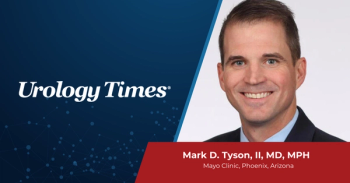
Can nurse practitioners see Medicare patients on their own?
Ray Painter, MD, and Mark Painter also answer coding questions regarding vasectomy and code 50543.
Is a nurse practitioner allowed to see Medicare patients on their own? The “incident to” guidelines state that the physician must see the patient on the first visit to establish the physician-patient relationship; from there onward, the NP can see the patient under direct supervision. Can the NP see a new patient without the doctor being present?
We will answer this question with the obvious caveat that the state licensure for the advanced practice provider (APP) must allow for the NP to see new patients and render the services provided without a physician present.
Medicare payment rules allow the NP to provide patient services without patient-physician contact on the date of service. Report the service provided and supported by documentation with the NP as rendering and billing provider (national provider identifier [NPI] for the NP) for the following evaluation/management services:
- new patient visits
- visits in which an established patient is seen for a new problem
- visits in which the treatment provided or prescribed is not a part of the treatment plan established by a physician
- services provided in the hospital or ambulatory surgery center.
These visits do not qualify for “incident to” billing.
Also by Ray Painter, MD, and Mark Painter:
For Medicare, “incident to” visits are only allowed in the office setting and should be billed under the physician NPI as billing provider for the following:
- The physician and NP both see the patient on the same date and documentation reflects that the physician was involved in the visit reconfirming findings and treatment plan for a new or established patient.
- An established patient is seen by the NP only and the treatment provided is a continuation of a treatment plan prescribed previously by a physician in the group (rendering provider is NPI of NP). The billing provider must be in the office suite at the time of this service (billing provider is NPI of physician present).
For private payers, you will need to check your contracts or payer websites for appropriate billing and make sure that the NP is properly credentialed with each plan as required.
Other services that are provided by the NP and ordered by the physician such as catheterization, injection, etc. can be reported under the “incident to” rules similar to nursing and other staff reporting.
Next:
We had a case in which the patient came into the clinic on day 1 for a vasectomy. The vasectomy was completed on the left side. However, we were unable to secure the right vas. A right-sided vasectomy was scheduled and completed at the local surgical center on day 2. How would you code, since 55250 is for unilateral or bilateral procedures?
We recommend reporting the first service with 55250-52 and the second service with 55250-58-52-76. Pricing for each should be decreased slightly from the normal case but does not need to be 50% as each side was somewhat complex.
Read:
Be sure to document in the first operative report the complexity of the problem and the plan to perform the second procedure to justify the use of the –58 modifier on the second procedure.
Can 50543 be billed with 50541? The AUAcodingtoday.com bundling matrix notes that a modifier is needed, but we are unclear about which one. We did a partial nephrectomy on a 2-cm mass, but in order to even approach this mass and do the surgery, we had to remove an 8-cm renal cyst. We did a cyst decortication. This is a private payer, so is the –XU modifier correct or –59?
According to your comments, it would appear that the cyst was removed to facilitate the procedure. If so, you should not bill for the ablation of the cyst even though you performed a full decortication.
However, if the cyst ablation was medically necessary and not performed just to facilitate the primary procedure, then both could be charged: 50541 (Laparoscopy, surgical; ablation of renal cysts) is bundled into 50543 (Laparoscopy, surgical; partial nephrectomy); however, unbundling is allowed with an appropriate modifier.
The appropriate modifier would be –59 (Distinct Procedural Service) for private carriers unless that carrier has specifically stated that it recognizes the “X” modifiers. –XU (Unusual Non-Overlapping Service) should be appended for the Medicare patient.
Send coding and reimbursement questions to Ray Painter, MD, and Mark Painter c/o Urology Times, at UT@advanstar.com. Questions of general interest will be chosen for publication. The information in this column is designed to be authoritative, and every effort has been made to ensure its accuracy at the time it was written. However, readers are encouraged to check with their individual carrier or private payers for updates and to confirm that this information conforms to their specific rules.
Newsletter
Stay current with the latest urology news and practice-changing insights — sign up now for the essential updates every urologist needs.


















